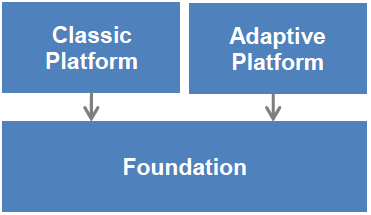The development of the AUTOSAR Classic Platform focuses on the requirements for the development of statically configured automotive Electronic Control Units (ECU) with real-time requirements.
The AUTOSAR Adaptive Platform is a flexible software architecture designed for high-performance ECUs. This setup is ideal for challenging applications like automated driving or central applications servers that require significant computation power as well as flexible software installation and update mechanisms.
Performance
The Adaptive Platform supports high-performance microprocessors with different operating systems (POSIX-based), more complex application functionality and enables software development cycles that are much shorter than the typical lifecycle of vehicle models.
Dynamic
The Adaptive Platform offers greater flexibility in implementing and deploying automotive applications in vehicles. There is no longer one single binary file to be deployed on the hardware. The user experience is similar to a mobile phone or a PC, you can add and update applications dynamically.
A vision: Software Store
One vision is, to build up a software store like an Appstore to be able to install and continuously update or purchase additional software for your vehicle.
Adaptive Platform complements Classic Platform
The AUTOSAR specification is separated into three parts. There is the Foundation, the Classic Platform and the Adaptive Platform.
The Foundation includes the specification of e.g. the bus protocols to ensure communication compatibility.
The Adaptive Platform is designed to complement and interact with the classic world.

Communication
Traditionally, automotive communication relies on broadcasting signals, which works well for cyclically communicating small, control-related data. In AUTOSAR Classic there is also a static service-based communication concept.
However, in an adaptive context where you want to install and update applications more flexible a static configuration of communication paths should be avoided. A communication paradigm that enables the developer to find and establish connections during runtime is better suited. For this purpose, the Adaptive Platform provides service-oriented communication along with the existing signal-based paradigm.